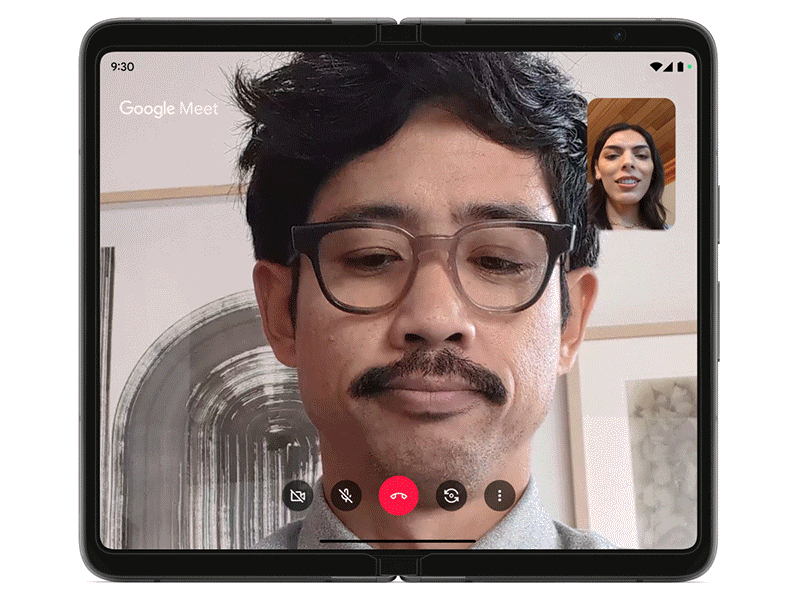Google officially unveiled its first foldable smartphone, the Pixel Fold, at Google I/O developer conference. Despite the leaks and teasers leading up to the event, the official announcement has generated significant buzz as it positions Google to compete with models such as the Oppo Find N2 or the Galaxy Z Flip 4.
When folded, the Pixel Fold is much wider than Samsung Galaxy Z Fold 4 — the OLED outer display is 5.8 inches, supports 120 Hz and has a resolution of 2,092 x 1,080 pixels. This results in an aspect ratio of 17.4:9. For comparison — The outer display of the Galaxy Z Fold 4 has a ratio of 23.1:9.
The inner OLED display is 7.6 inches and has a resolution of 2,208 x 1,840 pixels, it also supports 120 Hz. The 6:5 aspect ratio is wider than it is tall when unfolded, unlike the Z Fold 4. The brightness is regular at up to 1,000 cd/m², the peak brightness is 1,450 cd/m². The external display has 1,200 and 1,550 cd/m² respectively. The inner screen is protected by ultra-thin glass, while the outer screen is protected by Gorilla Glass Victus.
Inside the Pixel Fold is powered by an 8-core Google Tensor G2 + Titan M2 processor, which is already used in the Pixel 7 series and also the new Pixel 7a. The main memory is 12 GB, the flash memory either 256 or 512 GB.
A triple camera is installed on the back, the main camera of which has 48 megapixels and an optical image stabilizer. It is supported by a super wide-angle camera with 10.8 megapixels and a telephoto camera with five times optical magnification and also 10.8 megapixels. The Pixel Fold allows digital zooming up to 20x magnification. Vides can be recorded in 4K with up to 60 fps.
A front camera is installed in both the outer display and the inner screen. The outside has 9.5 megapixels, the inside has 8 megapixels. Users can also use the main camera for selfies by unfolding the smartphone and using the outer display as a viewfinder.

Powering the Pixel Fold is a robust 4,821 mAh battery, which, according to Google, should provide over 24 hours of usage under normal conditions. For those requiring even more longevity, an extreme energy-saving mode extends the battery life to an impressive 72 hours. The smartphone also supports wireless charging, but cable charging can only be done with a separately available charger.
The Pixel Fold runs Android 13 and supports USB Type-C 3.2 Gen 2, Wi-Fi 6E, Bluetooth 5.2, eSIM, GPS, LTE, 5G, and NFC. According to Google, over 50 apps are optimized for use with the foldable interior display, including Netflix, YouTube, Spotify and Tiktok. A taskbar is designed to make multitasking easier.
The smartphone is available in two colors – obsidian and porcelain, and also has the design of the back cover and outer display, like the flagship Pixel 7 series. The body materials consist of glass and aluminum, and the hinges are made of stainless steel with a mirror finish.
The Pixel Fold starts at $1,799 for the 256GB version and $1,919 for the 512GB version. This makes the Pixel Fold noticeably more expensive than other foldable smartphones with a comparable form factor. The device is already available for pre-order on the Google website.

